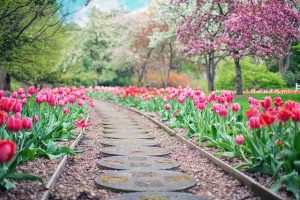The best gardening tips for beginners
Beautiful gardens are built on the basics. Even if you have never been a gardener, your lack of experience should not stop you from having your own garden. Gardening is as simple and satisfying as you hope to be. Understanding a few basic ideas helps you get on the right track for your dream garden – or at least a vegetable reward.
 Garden plants fall into one of three categories, depending on their natural life cycle: annuals, biennials or perennials. Each plant also has a Latin botanical name, often in parentheses or italics, which distinguishes it from all the others. Let’s know what prevents surprises.
Garden plants fall into one of three categories, depending on their natural life cycle: annuals, biennials or perennials. Each plant also has a Latin botanical name, often in parentheses or italics, which distinguishes it from all the others. Let’s know what prevents surprises.
Yearbooks complete their life cycle, from seed to seed, in a single year. By the end of the season, they produce seeds and die. Most annual flowers bloom all season and fill the gardens with a lasting color. These include marigolds (Tagetes spp.), Common zinnias (elegans zinnia) and annual sunflowers (Helianthus annuus).
Biennials need two years for their life cycle. The first year produces only with leaves, ecological growth. The flowers and seeds for the next generation come in the second year, and then the biennials die. The Italian parsley ( Petroselinum crispum var. Neapolitanum ) is an example of a biennial.
Perennials last three years or more, from seed to seed, and can live much longer in suitable conditions. Perennials bloom for shorter periods of time, but come back year after year.
Whether plants live through the winter depends more on the natural life cycles. Garden locations also determine what survives. The US Department of Plant Agriculture divides the United States into 13 growing areas, based on extremely low average temperatures. USDA 1 has the coldest winters, while USDA 13 has the warmest winters.
Plant labels and catalogs usually include the rating of the area. Learn more about your area and choose plants that fit. Perennials are native to the tropics and cannot survive in winter outdoor temperatures in the northern regions. They are still perennials, but northern winters can end their lives prematurely.
Biennials and perennials survive in outdoor gardens only within their limits. In USDA zones 4 through 8, the old-fashioned red finger (Digitalis purpurea) resists winters, and self-perpetuating plants can be invasive. The common rosemary (Rosmarinus officinalis) needs a warmer climate in USDA zones 8 to 10; in colder areas, it is grown as a yearbook.
 Good grain locations give new plants other advantages. Places with easy access to water simplify maintenance. Most flowering and fruiting plants, including vegetables, thrive in sunny locations. These places receive at least six to eight hours of direct sunlight each day. Plants that prefer the sun can tolerate shady places, but they will have, poor growth and a few flowers or fruits.
Good grain locations give new plants other advantages. Places with easy access to water simplify maintenance. Most flowering and fruiting plants, including vegetables, thrive in sunny locations. These places receive at least six to eight hours of direct sunlight each day. Plants that prefer the sun can tolerate shady places, but they will have, poor growth and a few flowers or fruits.
Soil is also important. Most plants bloom in well-drained soil with plenty of organic matter. This means that the natural material from plant or animal sources, such as pine needles and decomposed compost or leaves. Organic matter helps keep water and nutrients in the soil while improving soil structure and drainage.
All types of plants, from annuals to perennials, trees and shrubs, benefit from organic matter in the soil. Place a 3-inch layer of compost or other organic matter over the garden area, then place it about 6 inches deep to change the soil before planting.




